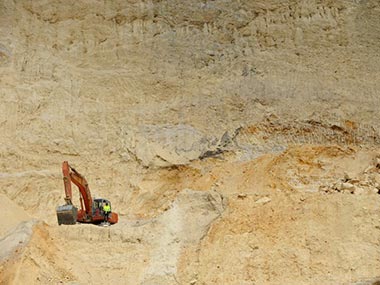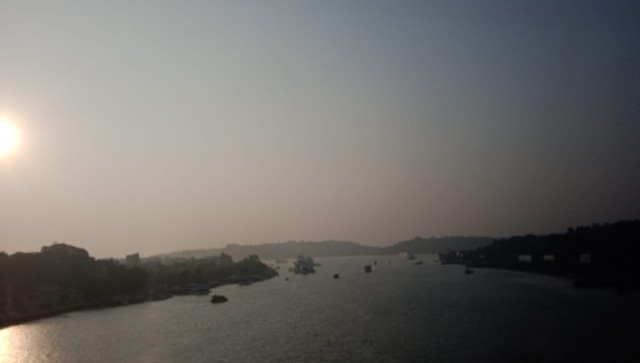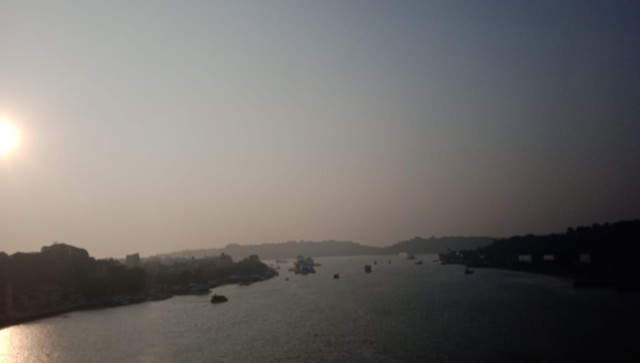By Mayabhushan Nagvenkar
Panaji: Goa does not have an IAS officer like Durga Shakti Nagpal, the feisty sub-divisional officer whose action against illegal sand mining mafia in UP may have led to her suspension, but has earned her a nation’s regard. But it has illegal sand mining. In fact, lots of it for an ecologically fragile state.
Despite a blanket ban, three of its major rivers - the Chapora, the Mandovi and the Terekhol - continue to be in the grip of illegal mining for sand, which feeds Goa’s burgeoning real estate industry. While the issue of the more infamous illegal mining for iron ore has hogged the media limelight here in the last few years, those who have been fighting against illegal sand mining have neither been acknowledged nor rewarded.
Ask Narayan Sopte, a retired policeman, one of the two petitioners, whose litigation provided the first rap on the knuckles of the illegal miners.
“I was just a retired policeman. You have no idea about the kind of torture I was put through. Not just by the illegal sand mining mafia, but even the politicians,” Sopte told Firstpost, speaking of his travails which began in 2011.
Sopte lives in Pernem, a village, nearly 30 km from here along the seemingly postcard perfect Tiracol river. But those who have lived in the area testify that rampant mining for sand along the river bed, most of it illegally, is causing the land banks on the river bed to cave in. “All along the river wherever there was sand mining taking place, the land by the bank was caving in by the foot. Portions of coconut groves along the river were just being eaten up by the river, whose bed was deepened everyday due to the mining,” Sopte said.
On record, 59 licenses have been allotted to extract sand along Goa’s rivers - five in the Chapora river, 26 in the Mandovi and 28 in the Terekhol river. And how much did the state government officially earn from the entire sand mining industry?
In 2008-09, it netted Rs 10 lakh plus. In 2009-10, royalty collected from sand mining was Rs 7.32 lakh and in the subsequent half a year, the collections were as meager as Rs 1.44 lakh, before the ban came in to place.
According to the records available with the Captain of Ports, a Goa government department which looks after minor ports and river channels, only 50 sand mining canoes are registered officially, while an estimated 300 plus canoes function illegally.
“The reality was that there were much more players than the licenses issued and the sand extraction simply multiplied, but the government received nothing. It was a mafia-like operation,” he said.
Sopte in 2011, first filed a complaint with the local police station against the illegal sand mining operations, but no First Information Report (FIR) was registered. He then filed a private complaint with the judicial magistrate first class (JMFC), after which he was harassed by both the sand mining mafia as well as the ruling politicians. While the mafia burnt his effigies in public and threatened him and his family, ruling politicians summoned Sopte to the state legislative assembly and censured him over and over again for his complaint.
At this point, Kashinath Shetye, who has the unique distinction of being a government servant and one of the most prolific Right to Information (RTI) activists, joined Kerkar as co-petitioner.
The sand mining lobby reacted by storming Shetye’s residence and threatening him to withdraw the complaint. After the attack, the gang of illegal sand miners addressed a media conference convened by a local Nationalist Congress Party (NCP) leader Jitendra Deshprabhu, justifying the attack. It is another story that Deshprabhu was arrested in 2012 for illegal bauxite mining.
Political support for illegal sand mining has never been more obvious than in former Congress chief minister Digambar Kamat’s regime, which ended in 2012, when irrespective of the ban, sand mining was rampant along riverbeds. Politicians like Congress MP Francisco Sardinha, among others of his ilk, continue to lobby for the immediate resumption of sand mining even today, ostensibly citing the concerns of the ‘aam aadmi’.
“The common man today finds it difficult to build a house because of the dearth of sand,” he said on Monday, insisting he is not speaking for the real estate lobby. But Sardinha’s ‘concern’ mirrors what Goa’s top real estate dealers have to say.
One of the major concerns expressed at a meeting between the Chief Minister Manohar Parrikar and the Confederation of Real Estate Developer’s Association of India (CREDAI) last week was the dearth of sand, with its members asking the Parrikar to make sand available for construction purposes.
However, it’s not that illegal sand extraction has come to a standstill here. In the last one year alone, nearly 70 persons, mostly labourers from Uttar Pradesh and Bihar, have been arrested for illegal mining alone and nearly a dozen canoes and trucks seized. When it comes to mining, it turns out that Goa is perhaps just as lawless as the northern badlands.


)




)
)
)
)
)
)
)
)